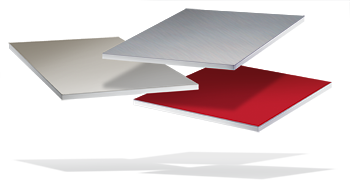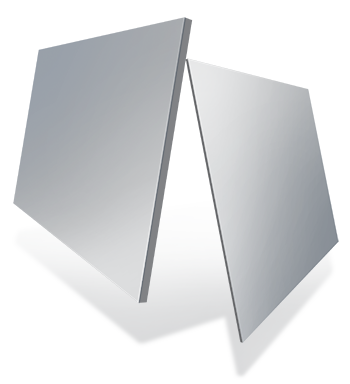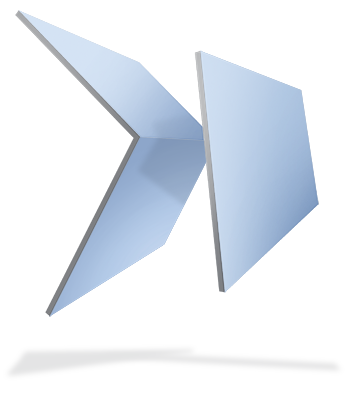- Metalwërks
- Solid Metal Plate: One of Nature’s Most Suitable Exterior Cladding Materials
Why Solid Metal Plate?
Why Solid Metal Plate?
Solid metal plate is one of nature’s most suitable exterior cladding materials. Here’s why.
No plastics. No foams. Far safer.
Unlike aluminum composite material (ACM) or insulated metal panels (IMP), Metalwërks® solid metal plate is never fused with plastics or foam cores, so there is no concern for delamination. This gives solid metal plate a significant value as scrap and ensures it is recycled at the end of its service life, whereas ACM and IMP are usually landfilled because it is difficult and costly to separate metal from plastic. Moreover, solid metal plate materials contain no toxic plastics that create dangerous health and safety risk in the event of a fire.
Thick and strong
Solid metal plate panels are ideal exterior cladding materials for their robust thickness and strength. To qualify as metal plate, the metal must be at least 1/8″ (0.125″ or 3.175 mm) thick – providing an extremely flat and durable surface. Through appropriate materials selection with Metalwërks metal plate systems, there is a reduced risk of oil canning, a common problem with panels made from sheet metal (which is less than 1/8″ thick). Metal plate’s robust nature also makes it far more resistant to denting than ACM or sheet metal, whether caused by people or the forces of nature.
Dead flat or formed according to your vision
Imaginative architects leverage metal plate’s high strength and formability to more affordably deliver remarkable exterior expressions – from dead flat to bold angular and curvilinear forms that impart texture, movement, and rhythm – the hallmarks of Metalwërks-clad buildings.
Keeping it dry
Like all metal cladding materials, solid metal plate panels cannot absorb water and easily shed water away from a building. Produced from corrosion-resistant, non-ferrous metals, Metalwërks metal plate systems help to keep buildings dry and free from mold development or water damage.
Proven performance
Metalwërks plate systems have been widely used in exterior metal wall systems for decades and metal plate is a listed material within the National Institute of Building Sciences’ Building Envelope Design Guide.






